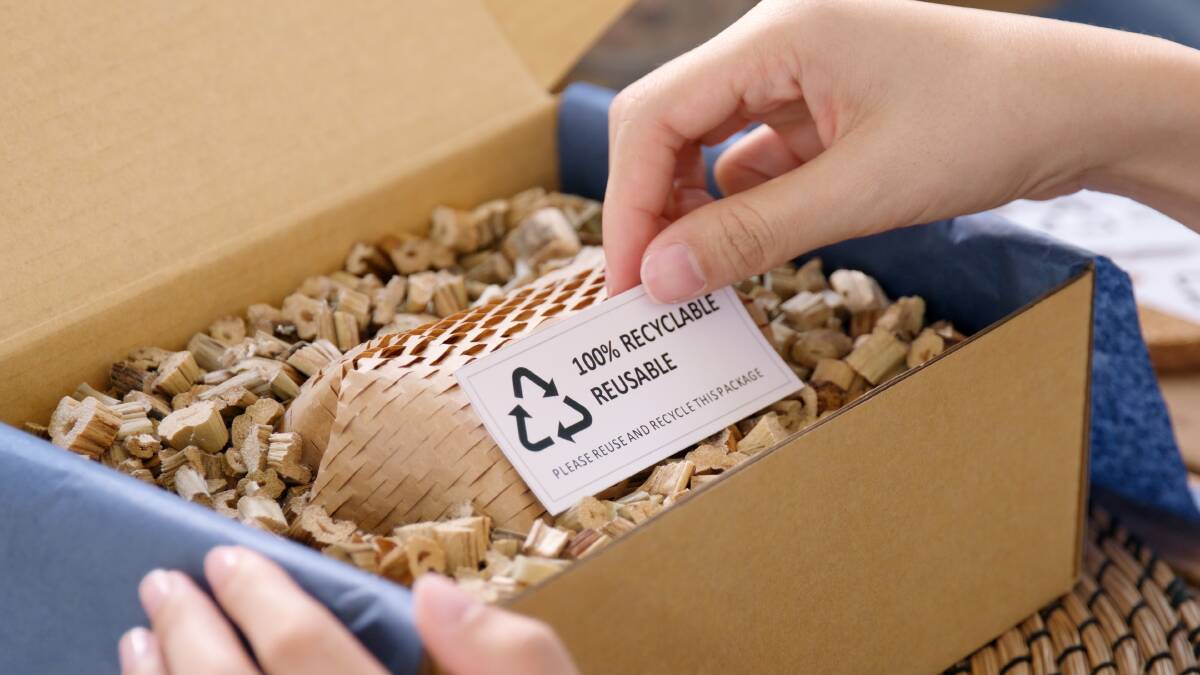The Cost Benefits Of Switching To Sustainable Packaging In Shipping

This is branded content.
The Australian shipping industry is witnessing a quiet revolution. Packaging is no longer just a means to protect goods in transit. It's a statement of a brand's values, with sustainable packaging taking centre stage.
In a 2021 Australian consumer survey, more than half of the respondents deemed sustainability important. As businesses across the continent are increasingly held accountable for their environmental footprint, the shift toward eco-friendly packaging options isn't just a moral choice but a strategic one too.
This blog unpacks the financial upsides of making the switch, demonstrating that what's good for the earth can also be good for the ledger.
1. Reduction in material costs
Switching to sustainable packaging starts with a simple swap: from new to recycled materials. Not only is this a nod to the environment, but it also makes sense financially. For example, shipping materials like the timber cases' from Safe Pack can be recycled and used again, reducing the load on the environment.
Recycled materials often come at a lower cost than virgin materials. For instance, using recycled cardboard can significantly reduce expenses because the raw material costs are less and the production process is more energy efficient.
Traditional packaging solutions, like plastic and Styrofoam, are losing their cost advantage. Sustainable materials-such as biodegradable packing peanuts or corrugated bubble wrap-are now competitive in price, especially when you factor in the potential for reuse and the growing consumer demand for green packaging.
Additionally, when you buy sustainable packaging materials in bulk, suppliers often provide a discount. This reduces your per-unit cost, leading to substantial savings over time. Durable and reusable packaging may cost more, but it pays off.
You'll save money by reducing the need to repurchase materials, and you can also avoid the rising costs associated with waste disposal.
2. Decreased shipping expenses
Embracing sustainable packaging is like choosing a lighter backpack for a hike. It makes the journey more cost-effective. With lighter materials and smarter design, you're set to trim down those shipping costs.
That's because sustainable options tend to weigh less. For instance, swapping out traditional plastic fillers for air pillows or biodegradable bubble wrap can reduce package weight, leading to lower freight charges.
Sustainable packaging is also efficient, which means no wasted space. Custom-fit designs ensure products are snugly packed, which can reduce the size of the box needed. Smaller packages mean more goods to fit in a single shipment, maximising space and minimising costs.
3. Enhanced brand image and customer loyalty
Using sustainable packaging indicates where your company's values lay. It's a visual and tactile statement that aligns with the values of eco-conscious consumers, enhancing your brand's image in the marketplace.
Today's consumers are savvy. They notice when companies take steps to be more environmentally responsible. This awareness can translate into a preference for your products, potentially boosting sales. A Nielsen study found that 66 per cent of consumers are willing to pay more for sustainable goods.
When customers see that a brand's values align with their own, they're more likely to stick around. For example, a report by the Harvard Business Review highlighted that brands with strong sustainability commitments saw double the growth of their competitors and increased customer loyalty.
4. Minimised waste management costs
Think of waste management costs as a leaky faucet in your company's budget. Every unnecessary piece of packaging waste is a drop of money trickling away. By tightening up with sustainable packaging, you can stop the drip and save more.
Less packaging means fewer trips to the dumpster and lower disposal fees. It's simple: the less you throw out, the less you pay. Also, engaging in recycling programs is cost-effective. Some materials might even be sold to recyclers, turning your waste into revenue streams.
Reducing your waste footprint also translates to long-term savings. You'll shield your company from today's waste management costs and future increases in waste disposal rates.
5. Financial incentives and tax benefits
The Australian government doesn't just cheer from the sidelines when it comes to sustainability. It offers tangible rewards. By tapping into these incentives, switching to sustainable packaging can be more of a financial boon than a burden.
Some of these incentives are the following:
APCO's product stewardship scheme
By joining forces with the Australian Packaging Covenant Organisation (APCO), your business can reap rewards for meeting sustainability targets. APCO is a partner that supports your efforts with co-funding opportunities, market development, and valuable networking with like-minded companies.
RACE for Manufacturing Grant
Imagine a boost to your business that helps you embrace technology that's kinder to the environment and your budget. The RACE for Manufacturing Grant does just that, offering a financial helping hand for projects that enhance energy efficiency, slash emissions, and elevate the use of recycled materials in packaging.
Research and development tax incentive
Investing in innovation has its perks. The R&DTI encourages businesses to delve into research and development, including sustainable packaging ventures. This incentive is a safe net, offering tax deductions to ease the financial uncertainty of bringing new eco-friendly packaging solutions to market.
And there's more on the horizon. With the Australian government crafting a mandatory packaging design scheme for 2025, the future promises even more support for sustainable packaging efforts. This upcoming scheme aims to ensure that all packaging will be designed with new life in mind - recoverable, reusable, recyclable, and reprocessable.
It's a clear signal that now is the time to align with these green initiatives.
Conclusion
The journey to sustainable packaging isn't just a trail for the eco-conscious but a path paved with real cost benefits. From the savings on materials to the trimmed shipping expenses, the financial perks are tangible.
The narrative doesn't end with reduced waste management costs; it's bolstered by the generous incentives and tax breaks offered by the Australian government. It's clear the long-term savings and benefits far outweigh the initial costs of sustainable packaging.


